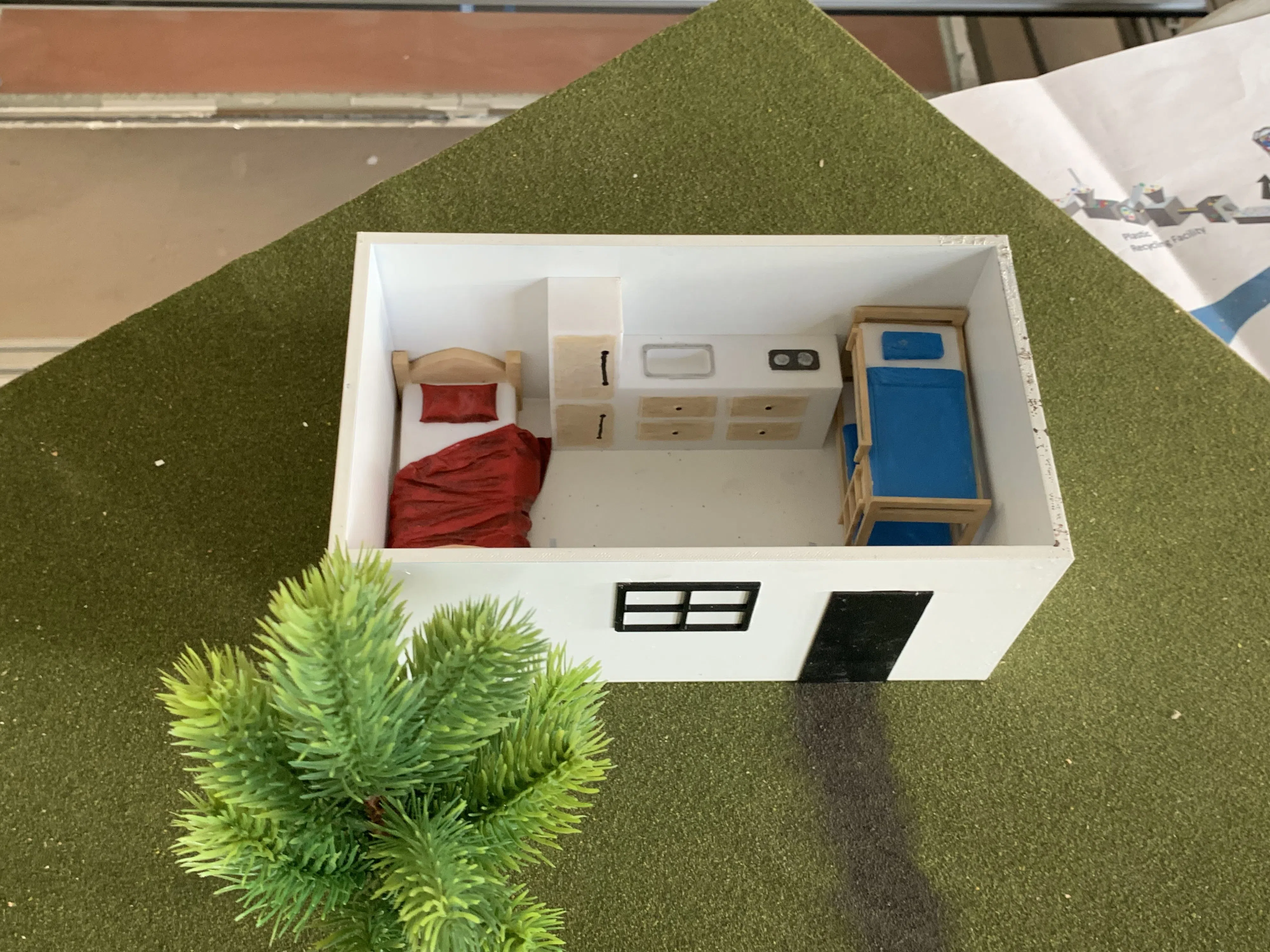
Replica of a tiny home
The owner of a Saskatoon 3D printing business is addressing some misinformation being spread regarding the validity of tiny homes for solving the homelessness issue.
In late September, Saskatoon mayoral candidate Don Atchison announced that if elected, he would partner with a local 3D printing company to build 100 tiny homes that would help house the city’s homeless population.
Randy Janes, who owns said business, Wave of the Future 3D, says at several debate events, one of Atchison’s opponents dismissed the idea and poked holes in its worth.
Janes didn’t name names, but at the recent debate hosted by the Saskatoon Chamber of Commerce, candidate Cary Tarasoff stated he was the Research and Development Manager for Vanguard Campers in North Battleford.
When on the topic of Atchison’s plan to address homelessness, Tarasoff stated that the homes have “no certification, no CSA (Canadian Standards Association certification), no Motorhome Association Certification. It doesn’t meet the building code.”
He also posed the question of where these tiny homes will be placed, as they will require sewer, water and power. He dubbed Atchison’s proposed solution as merely a dream.
Janes, who worked for 15 years as an RV specialist and sales trainer before getting into 3D printing, hopes to set the record straight and debunk rumours regarding the tiny homes he constructs.
“When he (Tarasoff) talks about ‘They’re not CSA’d’…We live in Canada. We can’t buy appliances that aren’t CSA’d. It is automatically CSA’d because I cannot buy any other appliances.” He adds that there is no such thing as Motorhome Association Certification.
Janes says full-time living and potential off gassing were other things Tarasoff mentioned, stating that it wouldn’t be possible to live in a tiny home due to the amount of chemical that would be emitted from the plastic.
“I just want people to realize that there are zero VOC’s (volatile organic compounds) and zero off gassing in the trailer (tiny home) …Cause it’s not his idea, he’s punching holes all the way through it.”
He adds that the flooring and glue needed to turn the property at 210 Pacific Avenue into a homeless shelter would off gas 10 to 20 times the amount that would come from his tiny homes.
“We have 100 per cent vapor-barrier tiny homes. We have zero off gassing, zero VOC’s, all that stuff is zero for health reasons, and it (the home) can’t support mold, water damage, rot, mildew, none of that.”
He adds that the homes are nearly vandalism-resistant, as it would be very hard to set them on fire or cut holes in their walls.
As for where to put the homes, Janes suggests the undeveloped land on the west edge of the city near Neault/Dalmeny Road. This way, he says they would still be in walking distance of a bus stop, Wal-Mart, and other businesses, but not downtown or in a residential area.
The homes come with a water tank and a small heater, both powered by a solar panel and an inverter, removing the need for external electricity or plumbing. He adds that a washroom and shower trailer would be located on site, as well.






















